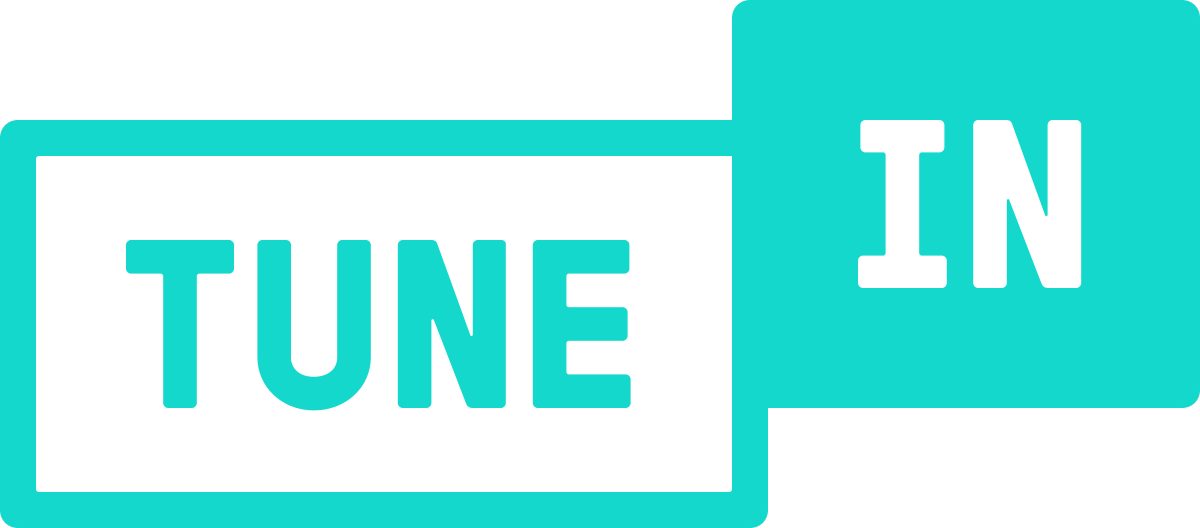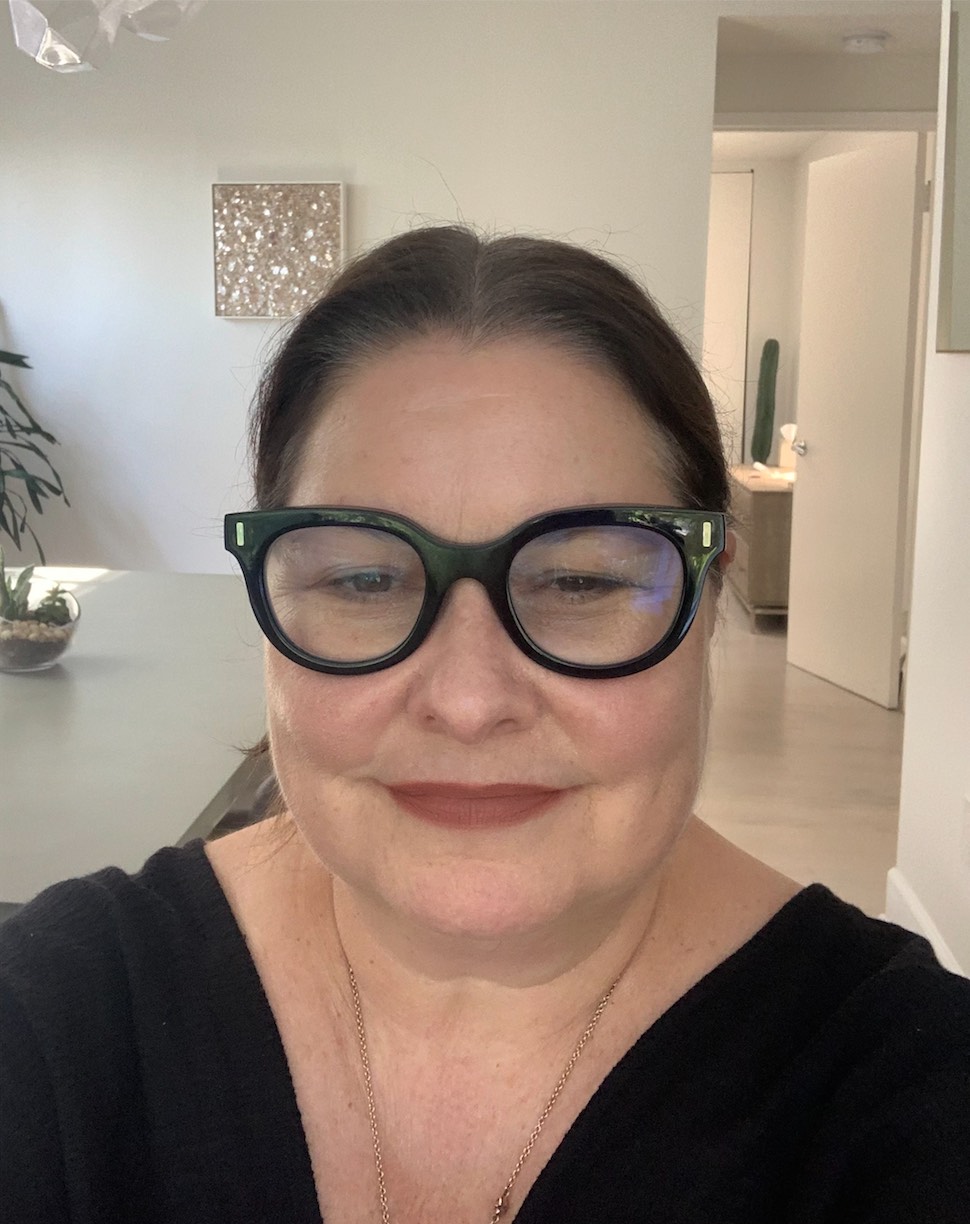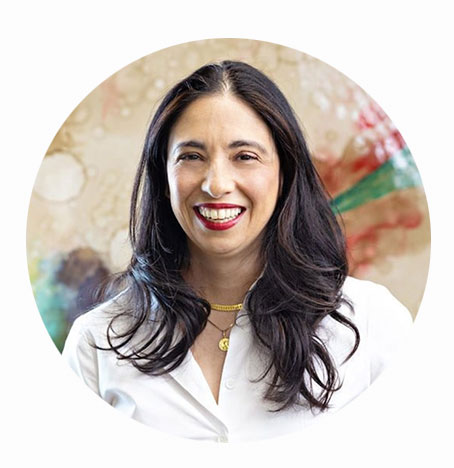Lara Schmosiman (00:01)
Hi guys, how are you? I hope your coffee is ready because today we’re gonna have a good one. So I believe it was a year ago, know, my husband always make this joke that I meet a lot of people in coffee shops and it’s true. And I met Don at the coffee shop. I read who he was. at the beginning, of course, I didn’t know how he looked, but I saw in his tag name ⁓ who he was. And I was, ⁓ this is an interesting conversation.
So I stopped him and say, I want you to be in my podcast. today we have Dawn Allen. So Dawn, welcome to coffee number five. Thank you so much for being here.
Don Allen (00:39)
Thank you.
Yeah, thank you for inviting me. was a, don’t get asked. I think it’s only my second one. I haven’t done many podcasts, but we were, definitely remember many of first time we were standing in line at the, at the coffee shop there, right outside of, uh, Mandalay, right. It was, were, that was the. Yeah.
Lara Schmosiman (00:59)
Yeah. And it was Mandalay Bay. Yes.
And the conference center in Las Vegas. And for sure it was very hot. But anyway, so Don today, he is a CTO of ⁓ Modo Perandi. He comes from an incredible trajectory of working at Costco, Ecom, and then working at drugstores, Zulily. ⁓ He has an incredible story, but something we were talking before the podcast.
was how important is to have a good user experience? And besides the looks, we need to make sure that when we’re something, we show it the right way. So how was your experience? Because you started like, I mean, we’re not going to hide our age here. We don’t have to disclose it either, but we’ve been around for a while and we’ve been in digital for a while. I started at least in 1999. So we saw the evolution. We saw
the possibilities also.
Don Allen (01:59)
That’s right, I mean, when I started my kind of e-commerce journey, I had technology degrees and I was in the military for a while, but when I got out and got into ⁓ e-commerce officially, it was 99 and I was a Costco wholesale. And Costco.com was just, we’re going into our second generation website, which wound up being the third generation website by the time I left. And there were only three of us in the technology area for Costco. I think we had three front end web servers.
a middle tier server and a database. And we were just getting started. And back then, like I was saying earlier, like back then, the goal was to create a website that looked compelling. And we had the product because we’re tying into the larger part of Costco. But if you roll forward now 25 years later, ⁓
Making a compelling website is table stakes for everyone because, you know, whether you’re going to use AI to do it or whether you’re just going to go and use one of the canned, you you Shopify with a great template or Salesforce, Commerce Cloud, ⁓ or even Wix or something like that. Like you can bring up a website that looks as good as any other any other website in a day or two. ⁓
Lara Schmosiman (03:03)
Mm-hmm.
Don Allen (03:14)
The product is the key. And there’s a lot of companies that have great product that can’t sell the product. There’s companies that have great websites that don’t have the right product on it. And then there’s the third problem, which is something we’ve been trying to tackle as of late with Modaparonde, which is what if you have too much product for someone to look at at one time?
So the problem there is you have a good looking website, you have the right product, but the right product is the right product for the right customer. So you can’t show the same product to every customer. So what do you do? You use, you know, there’s AI enabled tools now that look at the purchase history of customers to try to show them the products that they’re most compelled to purchase. If you come to Modaparonde and you search for, let’s say, know, Gucci or Valentino, then
we want to pull the product that you’re most likely to want to see. If I’m someone who buys belts and you’re someone who buys handbags, well, we would like to preference the handbag results for the brand for you and the belts for me because we’re more likely to convert. But it’s, you know, you have to figure that out because you also don’t want to show them just exclusively what you, what you think they want to buy because they may be looking for something else. So it is a constant song and dance with product and customers.
Lara Schmosiman (04:28)
Let me ask you a question.
So do you keep brands only that they’re performing or you let the brands be there all the time, even if they don’t perform, just to have quantity for ⁓ us, a place that people can come and explore?
Don Allen (04:48)
Yeah, I mode is definitely a fashion play and the fashion industry and look, I’m not an expert in the fashion industry. Maybe the, maybe the technology, the technology that it uses, but certainly not the fashion industry itself. have people that like a chief March, our chief merchant April Hanigan. have lots of people on her team that are extremely good and knowledgeable of fashion. So what they’re doing is they’re, they’re buying what’s relevant now.
Lara Schmosiman (04:55)
Come on, look at you.
Don Allen (05:14)
and what’s probably going to be relevant in the near future. And they’re getting that on the site. And they’re really the experts. They’re going to Paris and Milan and your fashion week. And they’re looking at, what are the trends, trying to buy those trends and get those trends available. And it’s kind of a song and dance between, you know, buying the things that are trending and buying things and creating your own trends. Because we have, you know, our founder, Lauren San Domingo,
is a fashion icon. So Lauren has Lauren’s closet on the site. If she goes and she puts things in as a selection, a curated selection of things that she likes, well, she can do more than just reflect what the fashion industry is doing. She can actually create ⁓ something in. She can augment what’s already happening in the fashion space by having her own curated selection of it. it’s hard to know. I’m always reminded of like,
Lara Schmosiman (05:58)
a trend.
Don Allen (06:12)
Whichever quote you want to choose, Steve Jobs would say, if I gave people what they wanted, I would have given them a better keyboard on their phone. Henry Ford may or may not have said, if I gave people what they wanted, I would have given them faster horses. But you have to be careful that you’re not just responding and having the product you think people want to buy. You should have that, but you also need to have your own
You have to your own opinion about fashion. In the fashion industry, you have to have an opinion about what fashion is. And that’s what the experts at Moda do. My job is to try to use the technology and the technology available to me to put the right product in front of the right customer based on the amount they like to spend, the product they like to see, because it’s really all about, like you said,
It’s about having a good looking website, at end of the day, it’s about converting that product on the site and getting people, giving people what they want.
Lara Schmosiman (07:12)
Absolutely, but also it’s about visibility. how can you, mean, right now we’re in the new era of AI, SEO is everything in every platform. Even, we cannot say that it’s social media, social media anymore. They’re their own search engines and now they’re integrations between Instagram and Google. So how you get visibility for this amount of huge amount of products that you have on the platform.
Don Allen (07:41)
It’s gotten harder than ever now because a few years ago, I think maybe let’s call it three or four years ago, Google really, and I’m not just playing this on Google, other search engines as well, they really changed the game with respect to SEO or search engine optimization. It used to be organic search engine optimization was have your product out there, have it compelling, have a good write-up. It gets pulled in by the crawlers and it’ll show up on the page when someone searches for, let’s say, a high fashion shoe or something. ⁓
If you look now, if you do a standard search on Google, have the searches that people are paying for, and then you have kind of an AI result, and then you have another layer where these are the secondary market where they’re also selling ads. You really don’t see anything organic.
Lara Schmosiman (08:23)
and you don’t have
first page, second page anymore. Everything is one page.
Don Allen (08:28)
No, you don’t see
anything organic now. have to scroll down to see any organic content on search engines now. the idea, search engine optimization, it’s not what it used to be because it used to be you try to game the system and get your content out there and make it relevant and try to lift your sales. And now ⁓ it’s much more difficult. can’t just, if you don’t want to just buy the ads outright, which sometimes you have to.
then you have to find other clever ways, like you were saying, like finding a way through social media, finding a way through having a voice in fashion and being at these events and having people watch the events and the recordings that are on social media, not just because you’re trying to sell them something, but because you are seen as an expert in the space.
Lara Schmosiman (09:10)
Yeah, you’re becoming an authority in this space and that’s you need to be relevant. But in a case that you have like a marketplace, you are not only an authority for yourself, you need to give authority to other brands.
Don Allen (09:27)
We just put in Marketplace about two years ago. We enabled Marketplace technology through a platform called Miracle and our Marketplace is growing. ⁓ But really our Marketplace, for us the Marketplace has generally been things that are hard to store and ship, know, kind of hit the Marketplace. ⁓ Things like, you know, sheets and other high-end product that we don’t want to store in a warehouse for an extended period of time. So we wind up doing a lot of that. We also have an opportunity to try out some of the newer.
some of the newer designers on the marketplace to see if their products.
Lara Schmosiman (10:00)
HOOT HOOT HOOT
Don Allen (10:07)
It’s okay, you’re gonna cut that.
Lara Schmosiman (10:12)
Okay, give me just a second. Something happened.
Don Allen (10:15)
Yeah,
something happened. Yeah, it doesn’t take much.
Lara Schmosiman (10:19)
Yes, normally he’s very quiet. Okay. So let’s go back to that. tell me you were, so how do you use the technology in the website that is different from what you do in the stores?
Don Allen (10:25)
Okay.
Yeah, I mean, well, it’s kind of the same problem in the stores, right? Because if you’re in a store, where do you put things in the store? Like, you know, if you go into a Costco, I worked for Costco for years, they’re great merchandisers and marketers at Costco. And you have the end caps, you walk through a Costco, you’ve got all the end caps on there, right? They push things to the end. That space is, they’re very competitive for that space, people that are trying to sell product. Those end caps are very…
analogous to what happens on a category page listing on our site, where at the top you have a banner pushing certain product. Those are kind of your end caps. So it’s not that different from trying to figure the same thing out about placement in the store, because some customers will walk through a Costco like this. They’ll view all the end caps. They won’t go down an aisle unless the end cap grabs their attention. But some people will go down every single aisle.
You have different kinds of shoppers. Recognizing the kind of shopper that someone is online is much easier than it in a store. And you can reshape the store online. You can’t reshape a physical store. So if you know someone is someone who goes down all the aisles, don’t make them. Give them a scavenger hunt type of feature. Give them something where, hey, you want to see some random product from an area. Give me an idea what you’re looking for. I’ll show you some random things if you’re really into browsing for interesting things.
But if you really just want to see like what are the fast movers, the most popular items, then you should show them those rights. And you can’t do both. You can’t do exclusively one or the other because it’s really dependent on what the shoppers, what the shopper wants to do because online shoppers are, are very different. ⁓ well, they’re not, they’re not that different from store shoppers, but what makes them different is that you can do, you can determine from the behavior.
what kind of shopper they’re likely to be and you can on the fly change the story.
Lara Schmosiman (12:23)
Let me ask you a question
because this is really interesting that you’re mentioning. You feel like it’s a different quality of shopper, the one that it goes online, that it goes to the stores?
Don Allen (12:36)
No, they’re the same people, right? I don’t mean to say that they’re different. I think the difference is that online, you can determine whether someone is, know, someone who goes through every aisle or someone who views the end caps. And once you determine what kind of shopper they are, you can customize the experience for that shopper. You can’t do that in a physical store. ⁓
Lara Schmosiman (12:59)
Yeah, but some was. No,
that’s true. But somewhere in the physical store, and this is something we were discussing before, is ghosts can touch a product, test a product. And so, and that’s how important this, when you come into the digital world, how you can show that product that they can see them on. And I’m guilty of buying way too many times things that I…
Don Allen (13:18)
Yeah.
Lara Schmosiman (13:27)
thought they would be good on me and they’re not.
Don Allen (13:31)
Yeah, mean, think about it. You know, why is e-commerce the life changing or, you know, kind of world changing event that it’s been? It’s pretty self-explanatory. I mean, you can’t walk into a store and say, show me everything in my size. You can’t walk into a store and say, show me everything. I love blue. Show me everything that’s in blue. Right. But you can do that online. You can search by color.
Lara Schmosiman (13:50)
Mm-hmm.
Don Allen (13:53)
You can search by size, can store your size in your profile, you can come back and say, only show me things that you have that fit me. Don’t show me anything that doesn’t, right? I don’t wanna be distracted by some shirt that I love only to drill into it and see that you only have it available in a small, right? So you can do that online. The tools for online shopping ⁓ have eclipsed the capability of store. The idea that people were never gonna completely shop online. ⁓
has been, online has outpaced the real world because of the flexibility and the capabilities of the sites that you’re on.
Lara Schmosiman (14:29)
Yeah, so we were talking about the marketplace online, but Modo Operandi started only as a store. And so people might wonder why you need a director of technology in a store.
Don Allen (14:44)
no,
Moda started as, Moda has had a presentation storefront before for ⁓ kind of a private shopper experience, but Moda has always been in e-commerce. There’s always been an e-commerce website. the storefront of Moda that people think about when they’re in New York, you see the vans driving around, those were delivery vans. And we would have offices there and we would have places where we could have, you know,
kind of high value customers or top tier customers come to some of those sites and get a private shopping experience. there’s, Moda has never been a store that everybody can walk into and walk around. We’ve only ever had, you know, events and showrooms and everything else has been online.
Lara Schmosiman (15:26)
Okay, I didn’t know that. I really thought that it was more like a showroom and then evolved from there.
Don Allen (15:33)
Well, know, a lot of our, you know, a lot of our, people that run Moda, a lot of the people in executive team have come from, you know, storefronts that had e-commerce experience. So they really know both sides of that business. But for the Moda side, with the exception of, like I said, those those pop-up events that we’ll do and certain events that we’ll do at Fashion Week. ⁓ Moda is exclusively an e-commerce experience.
Lara Schmosiman (15:57)
So how do you keep up with the new technologies and how you decide to bring in new technologies? What’s your process?
Don Allen (16:07)
Yeah,
it’s been, ⁓ you know, one of the things about fashion is the most important thing about a fashion company is the product, right? It really is. mean, of course we have to have the technology to move the product. We have to do all the other things to track our customers and delight our customers when it comes to the digital experience. But, you know, if Moda doesn’t have the right product, it’s never going to be successful, right? No matter how good the technology is. So we don’t lose sight of what’s most important to us. When it comes to technology though, we have
we went through a system of kind of designing everything ourselves. So the first iteration of Modo, which is still around, some parts of it are still around, we built this completely bespoke e-commerce experience. So it’s not running on someone else’s platform. It is developed as a standalone e-commerce experience. All the code was written by us. Over the last few years, we’ve started to introduce like Miracle, for example, for the marketplace.
ERP systems that we’re moving more into, such as NetSuite, and now looking at the future, ⁓ probably Shopify for the future where we’re going in and moving the storefront over to Shopify. What we’re trying to do now, we built everything before. And what we’re trying to do now is we want to build for competitive advantage, but we want to buy commodity things. And what I mean is, quite simply, no one’s going to write their own email system anymore. There’s too many good email providers out there, right? No one’s going to write their own file storage system.
Lara Schmosiman (17:29)
Yeah.
Don Allen (17:33)
But Moda has even today is running on its own e-commerce system, which by comparison, we’ve now evolved to the point where no one reasonably is going to write their own e-commerce site unless they have to do something markedly different than everyone else. And then of course, maybe they would. mean, Amazon is on a bespoke system and probably always be on a bespoke system, but Moda is not Amazon, certainly by size. So we want to get onto a standardized platform.
for most things. And we want to save that 15 or 20 % to do heavy customized code that serves a very distinct purpose for us. But we want to be able to tap into the larger ecosystem of these applications because, know, AI is a big emerging thing, of course. you know, where’s AI being built? Shopify is building AI around there. You have lots of different vendors that are building AI solutions that bolt on to Shopify.
Lara Schmosiman (18:11)
Mm-hmm.
Don Allen (18:23)
But we are on a bespoke platform. No one’s building for us. We have to build everything ourselves right now. No one’s going to build, no one’s going to build a search engine that’s going to plug into our site easily because it’s so custom. so we want to, we need to move to a platform that.
Lara Schmosiman (18:28)
I know, my, man, that’s hard.
No, and I’m sure
that that’s affecting also your SEO and your organic bridge.
Don Allen (18:45)
Yeah, it probably would be if SEO weren’t such a, ⁓ know, SEO is pretty much wiped out at the moment. We’re just like, we were talking about with the search engines, but ⁓ we do a pretty, we do a pretty good job of giving the, like we can feed the SEO when the bots come, we give them all the right content that they want. We do everything we can to help there. But the things that I worry about are, you know, if Shopify came out with a wonderful AI search prioritization feature,
⁓ they would, every company on that platform would leap over us in that functionality because we haven’t built it. So we don’t want to, you know, lot of people would say, well, if you go to Shopify, it’s a level playing field. But the point of that is Shopify or, or whether it’s, you know, Shopify or Salesforce or big commerce or anything else, you know, those playing fields may be level for the companies that are on them. But if you’re on a bespoke platform, you’re not on a level playing field with them.
they’re actually ahead of you because if someone comes out with a great feature that plugs in automatically to one of those platforms, you can’t use it.
Lara Schmosiman (19:49)
Yeah, it’s all the integrations and
yeah, all the integrations you need to build a new API to work with them.
Don Allen (19:55)
Right. Like
our Miracle implementation, when we first spoke with Miracle about the implementation, they gave us a timeline and we said, well, if it’s going to take longer than that for us, so it takes us a couple of extra months to get everything set up. ⁓ That time is important. Time is money. We spent more time doing the integration because it was necessary because of the bespoke nature of our website. So we are trying to change that by getting onto a newer platform that’s
Lara Schmosiman (20:16)
Mm-hmm.
Don Allen (20:23)
that allows us to only build things that give us competitive advantage.
Lara Schmosiman (20:26)
And when you are make this decision, do you, for example, if you need to onboard into new platform, how do you approach this move? It’s a plan. You have an external team to do it. How do you work on, because when you, there is a testing of the platform, one is done. There’s a lot of work transferring everything from one place to another.
Don Allen (20:53)
It is.
Lara Schmosiman (20:53)
And since
you’re there, you’re going to optimize some things too.
Don Allen (20:57)
It’s scary because people want to, even some of this, we’ve designed all the systems ourselves, like I said, some of those systems are great. Some of them are not so great, but even the ones that are not great, that make it difficult for people to upload product or change product, they still know how to do it.
And when you start talking about a new system, you give them a new, let’s say a new PAM, know, product information management system for them to go manage the product updates and make the, make the updates for the images. They still have to learn something new. So even though the system we’re using might have idiosyncrasies, they know those idiosyncrasies. So part of the problem is you have to get buy in from the business because what we’re saying to them is, Hey, we’re going to change the way that you’re doing the catalog management for the website. And.
Lara Schmosiman (21:13)
Mm-hmm.
Don Allen (21:43)
You know, their first question is, ⁓ great. It’s changing because it’s going to get markedly better. Well, not at first. It’s going to get us onto a new platform and then we’re going to have opportunities to improve, but you’re to have to learn something new. You’re going to trust us and learn something new just for the, just for the sake of doing the same job.
Lara Schmosiman (21:56)
mean, your whole team will need to,
basically your whole team will have to learn in a new way.
Don Allen (22:01)
Yeah, the
whole company has to be involved in the migration because they have to get the training. They have to know the changes are coming. They have to work with us to, in some cases, work a little harder to get the same work done at first maybe. ⁓ it’s, you know, it’s a huge effort and it’s very scary because, you know, you can’t treat these things like technology projects. You have to treat them like company projects.
Lara Schmosiman (22:12)
That’s I’m sure.
And when you are launching, like for example, every time you launch a website, you have like soft launch, but in this case, you have to do a transition would make it at some point, you need to say it’s go time and just do the switch.
Don Allen (22:31)
you
Yeah, think, you know, this is a long time ago, but when we were the second generation Costco site, I remember when we launched that it was, it was one of the things that we did there that I would never do again is we, we went, oh, I’m sorry. That’s, I shouldn’t be going off. We went into, we went into it thinking that we would just change everything.
and launch it all at once. And that’s what we did. So we had the current site running and we go and we developed a brand new site and any changes that we had to make to this site that were necessary. We also had to it both. So this site’s running concurrently with the new one who’s like the prototype site. And we spent ⁓ over a year working directly with Microsoft launching on what was then called Jupiter, which is now called Commerce Server. And we did this big, you know,
Lara Schmosiman (23:31)
Yeah.
Don Allen (23:35)
18 month effort to launch this in conjunction with Microsoft and be the first e-commerce platform launching on Jupiter ⁓ commerce server. And it felt like the right thing to do at the time. And it was, it was a huge launch. was very disruptive. Looking back on that, what I learned and what we’ve applied over the years has been break out as many things as you can do things, do things and deliver them in pieces. And what’s what we’re doing right now at MoDot Branding. We’re changing.
We’re changing the way that we’re product management and vendor management right now. We’re going to launch that before the project even officially starts. So we’re going to remove those because those are the riskiest things. The biggest problem you can ever give a commerce company like Moda that’s trying to sell products is if I stop them from ordering product and I stop them from receiving it, ⁓ then nothing else is going to work. Because if you don’t have the product in the door, you can’t ship it out. So we’re doing those areas of the project first to de-scope, de-risk the project.
and then we’ll focus on the front end. And then for the front end, we’ll even break apart things that we can’t, like the pen and the site. Yeah, mean, that’s something I learned through experience. Most of the world does it that way until it’s very inconvenient. And then they’ll say, well, let’s just group these things together. But I think you have to.
Lara Schmosiman (24:39)
That’s smart. That’s smart.
And also with the tools
we have today, we really can make, as long as you make this user experience that it doesn’t disrupt the way that people shop. If you don’t break the user experience, I think it’s much easier to do it in different, to break it down in pieces.
Don Allen (25:09)
Yeah.
Yeah, I mean, the tools that we have today, 25 years later, compared to the tools that we had when we were starting in this, it’s night and day. It’s almost, I don’t want sound like the old guy who’s like, get off my lawn, yelling at the kids. I see people today, I see people coming out and they’re developing and they got AI assisted development and they’re writing code.
and they’re getting all this error correction stuff built in, and then you have things like garbage collection and application code that’s there cleaning up memory leaks. When we started, none of this really existed. If you created a memory leak, you would crash a server in a few hours. Nothing was going to come behind you and clean up your mess.
Lara Schmosiman (25:54)
I know.
No, and you
have to go through all the code to get error and find that error. remember those days, but also I think that that give us an advantage because we were there from the beginning. So we understand how far we came. And because in the beginning we had to do it with very rudimentary tools and we have to imagine the possibilities because we were the ones
Don Allen (26:05)
Thank
See you guys.
Alright.
Lara Schmosiman (26:30)
What if I do this? What would it happen? Would it be possible? And then you crash the whole thing. Maybe.
Don Allen (26:33)
Right.
It’s good to remind yourself
that, you know, NASA, you know, put someone on the moon in 1969, ⁓ with less technology than I have sitting on my desk. And, and what have I done with this amazing technology today? I’ve done a few meetings and I’ve answered a lot of emails. That’s what I’ve done with it, you know? So I think we have to not get too full of ourselves sometimes because we have all of these wonderful tools that are available now. And.
We have to challenge ourselves to do something really interesting and new with them and find creative ways. You know, it’s about creativity now because everyone has access to the same AI tool sets that, you know, it’s a level playing field in the AI tool set for the most part. There’s wonderful tools out there. And what you have to do is you have to figure out what’s the best way to use them. Right. You know, we talked about SEO for a minute on the SEO front. One of the things that we found, this is an interesting side story, but at at Modoc Ronde, we
We want to be seen as insiders in the fashion industry. Of course, we have a lot of fashion insiders. So when we write up product descriptions, we tend to talk about the brands and the brands that make them and the people that run those brands and the fashion designers. And that’s interesting things when you’re looking at a product and you’re about buying it and it positions us as experts in the industry. But when a crawler comes across that and crawls that content.
If you talk about this shirt in five colors and every one of them is the same designer, and we talk about the designer in the same fashion, it doesn’t do a lot for your SEO. So one of the things that we did that was interesting last year, we were prototyping this in AI, we would just take this image and feed it to an AI and say, give me 20 SEO tags based on what you see. It would give us those tags and we would go embed those into the page. So when the crawler came, regardless of what the description said for the product, we would have
we would have tags built into the page based on an AI interpretation of looking at the image. And we didn’t have to do that work. We didn’t have to go look at it and go, hey, let me come up with two more examples. Just let AI do it. And AI is really good at being consistent. When it looks at 1,000 products and it tags them, it’s very good at tagging them, speaking about the points of differentiation, whether that’s color or size, but also speaking very consistently about the things that are consistent between the products.
Lara Schmosiman (28:35)
That’s nice.
That’s amazing. Dawn, thank you so much for having coffee with us.
Don Allen (29:01)
Of course.
Lara Schmosiman (29:02)
And to you guys, I will see you next week with more Coffee Number 5.








